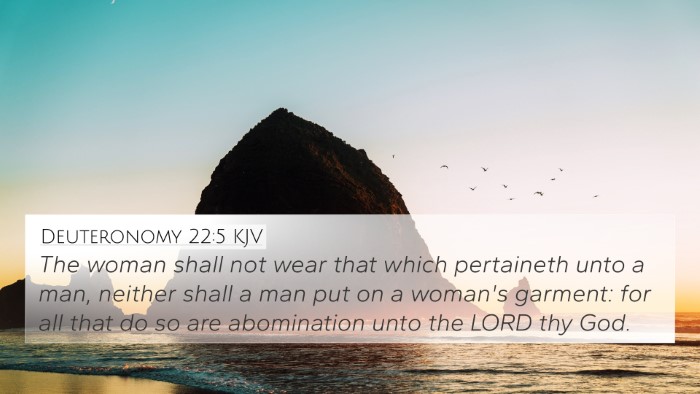Understanding 1 Corinthians 11:6
Verse Reference: 1 Corinthians 11:6: "For if the woman be not covered, let her also be shorn: but if it be a shame for a woman to be shorn or shaven, let her be covered."
This verse has sparked much discussion regarding the cultural context of head coverings and the implications of gender roles within the church. In this analysis, we will explore various interpretations and insights from acclaimed public domain commentaries by Matthew Henry, Albert Barnes, and Adam Clarke.
Contextual Overview
The Corinthian church was situated in a culture that held distinct views on gender and social order. Paul addresses issues surrounding worship practices, particularly regarding head coverings, as these were significant in Corinthian society.
Cultural Significance
Matthew Henry emphasizes that head coverings were a cultural sign of authority and modesty. He notes that in the Corinthians' society, a woman’s hair covered signified her acknowledgment of authority and respect within the worship setting. To be uncovered would be viewed as a rebellion against social norms and divine order.
Theological Implications
Albert Barnes points out that Paul’s instructions are not merely about external appearance but also address deeper theological truths about authority and submission within the church. He interprets the act of a woman covering her head during prayer as a recognition of the divine hierarchy that places Christ above man, and man above woman.
Interpretive Challenges
Adam Clarke provides insights into the complexities of the passage, noting that some see Paul’s commands as culturally specific rather than universally applicable. He raises questions about the continua in interpreting scriptural headship in modern contexts, urging readers to discern the underlying principles instead of strictly adhering to the customs of the Corinthian church.
Cross-Referencing Biblical Texts
Understanding 1 Corinthians 11:6 can be enhanced through the process of cross-referencing with other scriptural passages. Here are several related verses that contribute to the overall understanding:
- 1 Timothy 2:9-10: Discusses women's adornment and modesty in worship.
- Genesis 3:16: Addresses the established order of relationships post-Fall.
- Ephesians 5:22-23: Talks about mutual submission in marriage and the church.
- 1 Peter 3:1-5: Encourages women to exhibit an inner beauty that reflects their faith.
- Matthew 5:16: Emphasizes letting one’s light shine before others, suggesting that our outward actions should reflect our faith.
- 1 Corinthians 11:3: Establishes the hierarchy reflecting Christ's authority over man and man’s authority over woman.
- Colossians 3:18-19: Talks about the behavioral expectations between spouses in Christ.
- 1 Corinthians 14:34-35: Advises that women should remain silent in churches, further complicating the conversation about authority.
Thematic Bible Verse Connections
When exploring this verse, it is crucial to understand its thematic ties to biblical principles regarding authority and modesty. Here are some themes to consider:
- Authority and Submission: The concept of authority is central to Paul's argument throughout his epistles.
- Modesty and Respect: Paul's emphasis on outward displays, such as head coverings, relates to internal attitudes of respect towards God and church order.
- Cultural Context vs. Universal Principle: Critically analyzing how much of Paul's instruction is culturally specific versus timeless principles for the church today.
Cross-Referencing Biblical Texts Methodology
For those interested in engaging with the Bible deeply, employing cross-referencing methods can yield richer insights:
- Tools for Bible Cross-Referencing: Utilize a Bible concordance or a Bible cross-reference guide to identify related passages.
- Cross-Reference Bible Study: Create a study plan that incorporates parallel passages, expanding understanding through comparison.
- Bible Chain References: Trace themes or narratives throughout the Bible for deeper comprehension.
- Identifying Connections: Make notes of similarities between verses, facilitating a broader understanding of scriptural themes.
Conclusion
1 Corinthians 11:6 serves as a pivotal verse in discussing the roles of men and women in church settings. By engaging with various commentaries and cross-referencing other biblical texts, we gain a fuller understanding of the implications of Paul’s teachings. The connections drawn from broader scriptural themes reveal the ongoing dialogue about faith, respect, and cultural context in our interpretations today.
Further Cross-Reference Resources
Those looking to deepen their understanding of biblical texts may find the following resources beneficial:
- Bible concordances
- Bible reference resources
- Comprehensive Bible cross-reference materials




